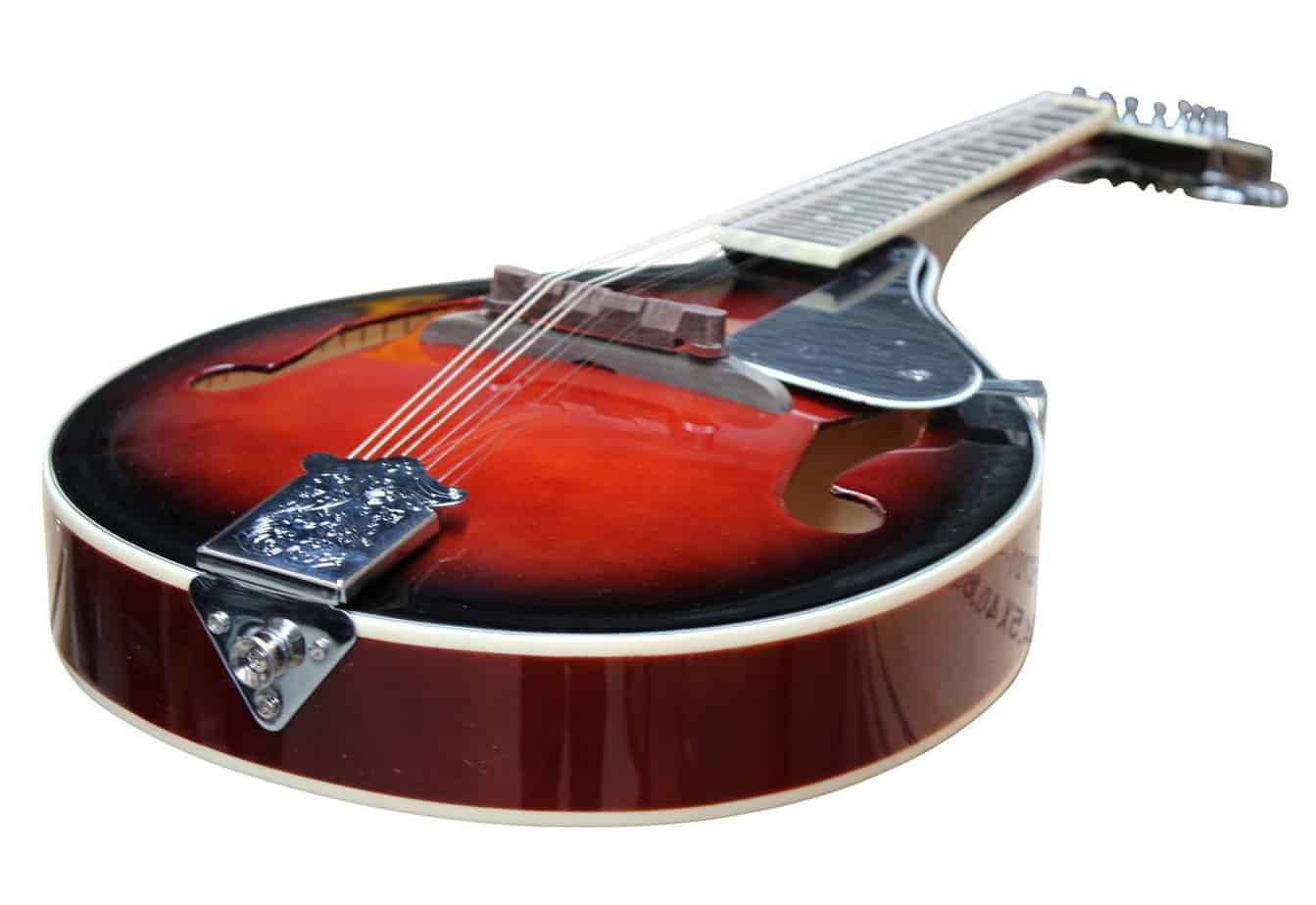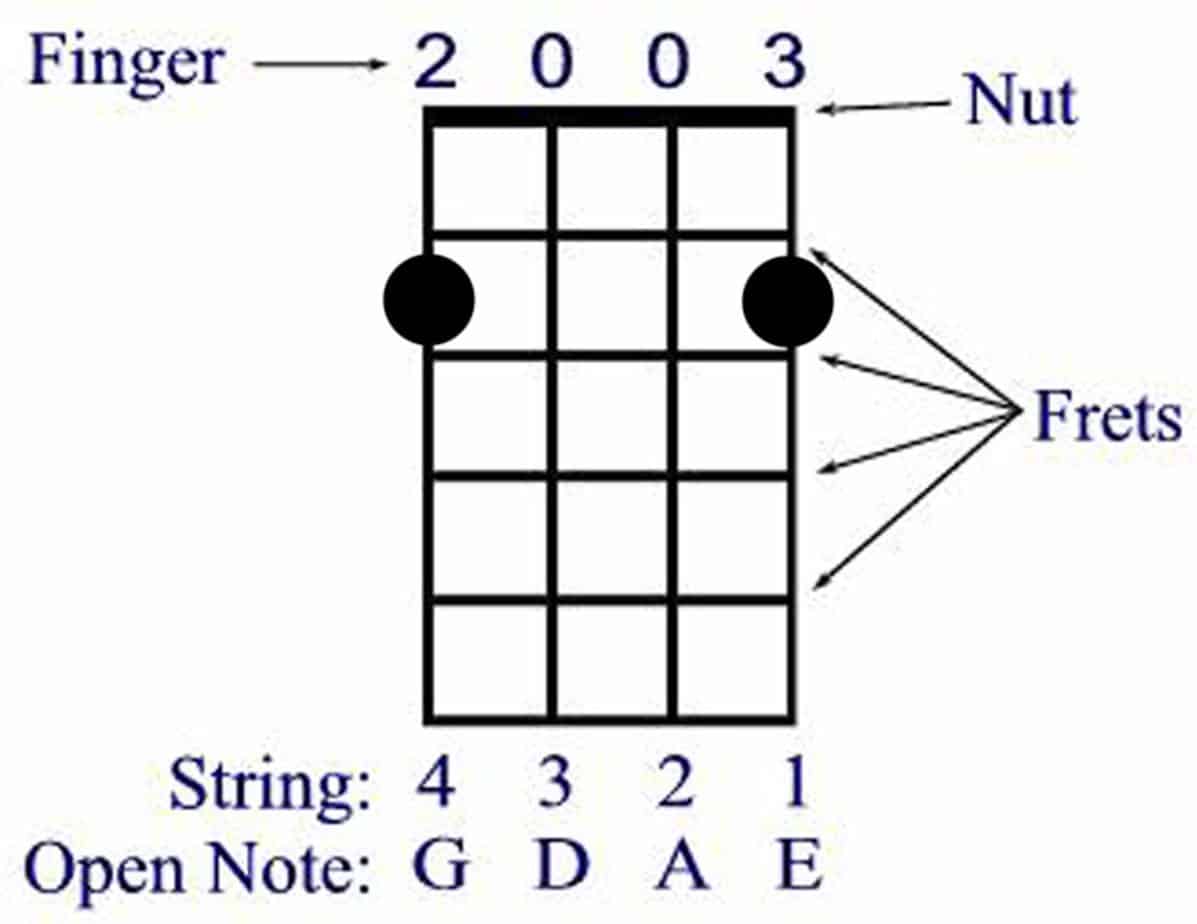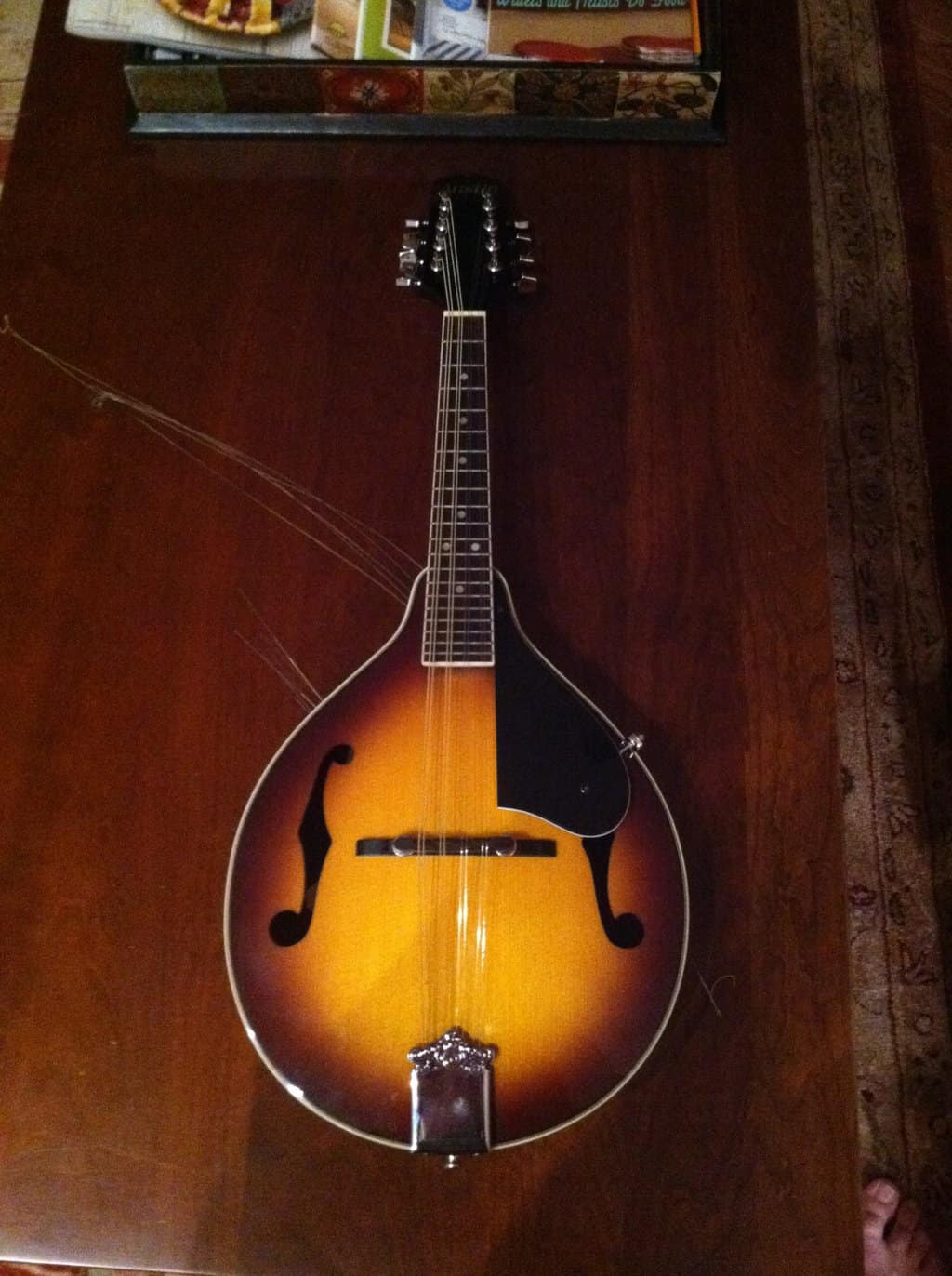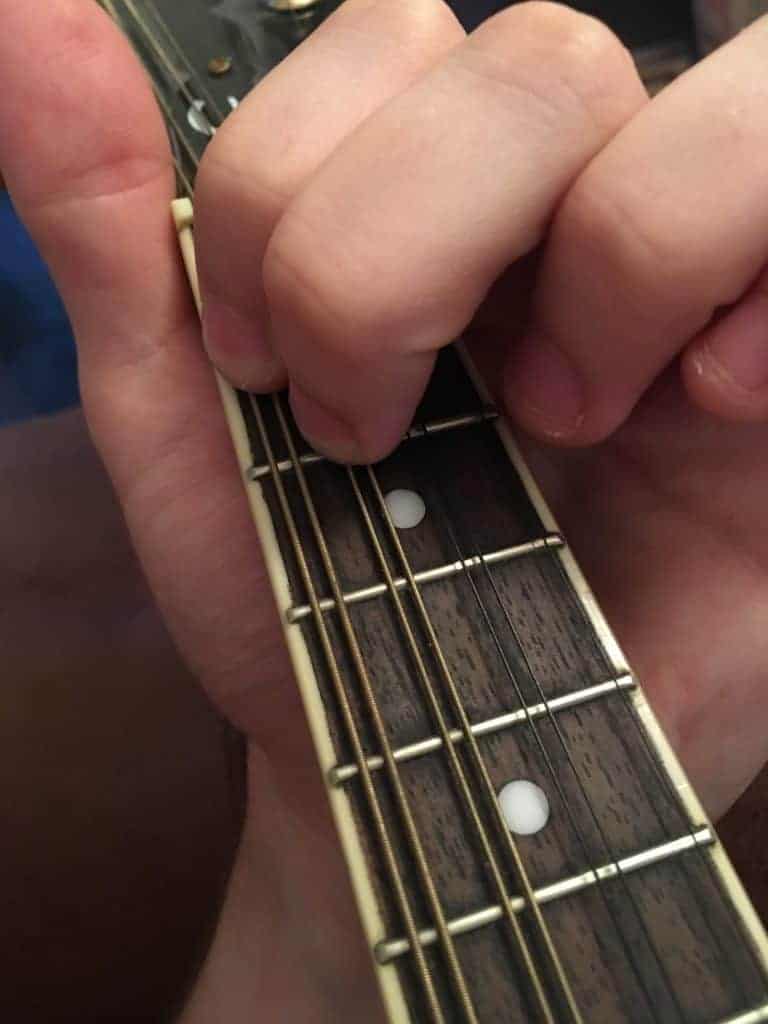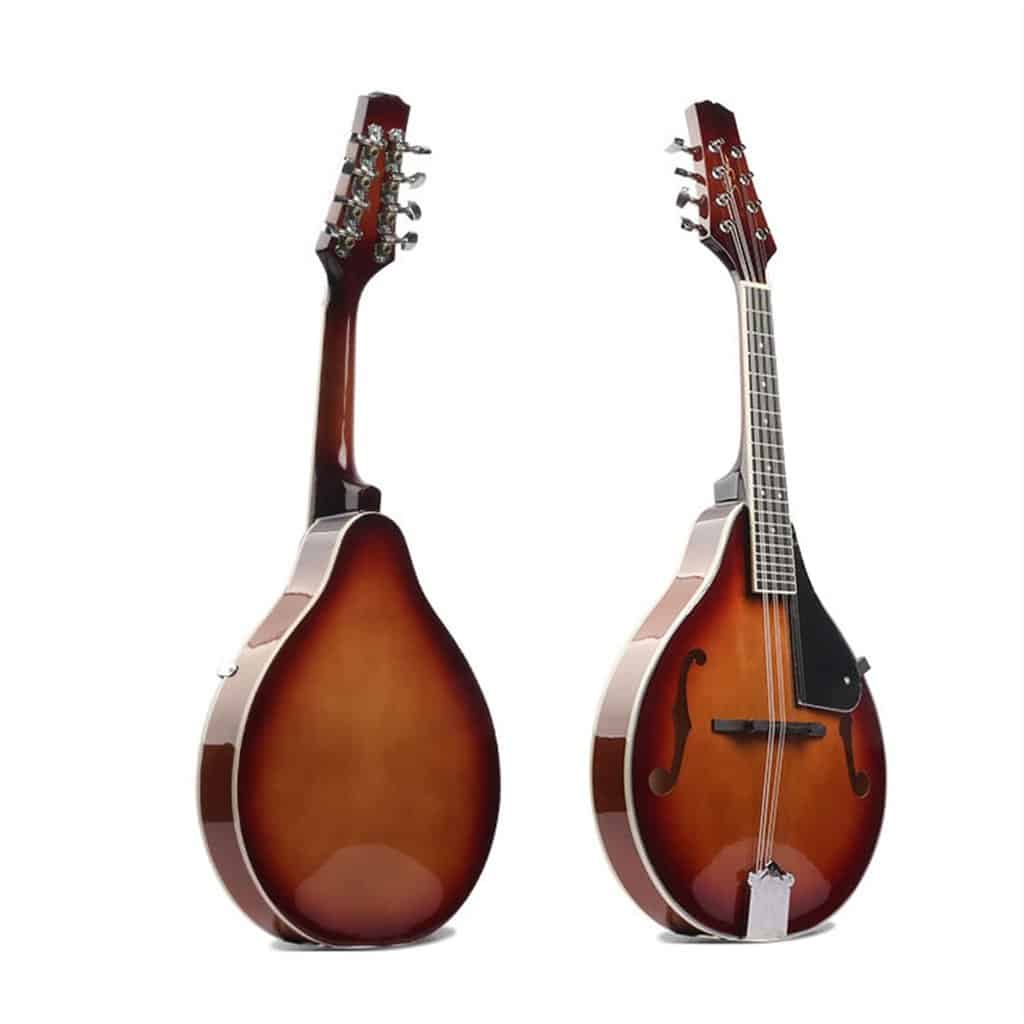If you’re a beginner mandolin player, you’re probably wondering how to string a mandolin. I’m here to help! This step-by-step guide will show you how to properly string your mandolin, so you can get back to playing your favorite tunes. With the right supplies and a few simple steps, you can have your mandolin strung and ready for playing in no time.
Materials Needed
| Mandolin |
| Mandolin strings |
| Winders/string cutters |
| Tuner |
| String lubricant |
| Headstock bridge pins |
Familiarizing Yourself With the Mandolin
| Parts | Description |
|---|---|
| Headstock | Holds the tuning pegs |
| Tuning Pegs | Used to tune the strings |
| Nut | Keeps the strings in place at the headstock |
| Neck | Holds the fretboard |
| Fretboard | The playable surface of the neck |
| Frets | Metal bars embedded in the fretboard |
| Position Markers | Inlays on the fretboard to indicate fret positions |
| Body | The resonating chamber of the instrument |
| Bridge | Holds the strings down at the body |
| Sound Hole | Allows sound to project from the body |
Before you can begin to string a mandolin, it is important to become familiar with the parts of the instrument. The headstock holds the tuning pegs, which are used to tune the strings. The nut keeps the strings in place at the headstock. The neck holds the fretboard, which is the playable surface of the instrument. The frets are metal bars embedded in the fretboard, and position markers are inlays on the fretboard to indicate fret positions. The body is the resonating chamber of the instrument, and the bridge holds the strings down at the body. Finally, the sound hole allows sound to project from the body.
Removing the Old Strings
To remove the old strings, first use a string winder to loosen the strings. Unwind the strings until they become slack. Then, carefully remove the strings from the tuning machines. Be sure to pull gently and not to snag the strings on the tuning machines. Once the strings have been removed, use a clean cloth to clean the fretboard. This will prevent dirt and dust from entering the instrument. Finally, use a pair of pliers to remove the bridge pins from the instrument. Once the bridge pins have been removed, the old strings can be discarded.
Tuning the Mandolin
- Tune each string in succession, starting from the thinnest string, using a tuning fork or a digital tuner.
- Adjust the tuning peg until the desired string note is reached.
- Fret the string at the fifth fret and adjust the peg until the note matches that of the open string.
- Repeat this step for the remaining strings.
- Tune each string up a semitone, then tune it down again until the desired note is achieved.
- Repeat this process for the rest of the strings.
Installing the New Strings
- Adjust the bridge of the mandolin by loosening the screws and moving it to the correct position.
- Thread the string through the tailpiece and bridge and wrap it around the tuning post.
- Tighten the string to the correct tension. Make sure it is in tune with the other strings.
- Once all the strings are tightened, stretch each string a few times to ensure the strings are in tune.
- Cut off the excess string with a wire cutter.
- Repeat for each string.
Tuning the New Strings
| Position | String | Tuning |
|---|---|---|
| 1 | E | E3 |
| 2 | A | A3 |
| 3 | D | D4 |
| 4 | G | G3 |
Once the strings are all in place, the mandolin is ready to be tuned. Different mandolin tunings are possible, but the standard tuning is E3 A3 D4 G3. To tune the mandolin, use an electronic tuner to match each string to the correct note. Start with the lowest string and work up to the highest string. It is very important to tune the strings one at a time, as tuning one string may affect the other strings. Once all the strings are tuned, the mandolin is ready to be played.
Troubleshooting
If the strings have difficulty staying in tune, the bridge may need to be adjusted. Carefully loosen the screws holding the bridge and move it up or down until the strings hold their tuning. Check the nut slots to see if they are too deep or wide, as this can also cause the strings to slip out of tune. If the strings are buzzing, check the nut and bridge for height. If the strings are too low, gently increase the height of the bridge and nut until the buzzing stops. If the strings are too high, lower the bridge and nut until the buzzing is gone. If the strings feel too tight or too loose, adjust the string tension by turning the tuning keys until the desired tension is reached.
Maintaining the Strings
| Task | Description |
|---|---|
| Tuning | Tune the strings regularly to keep them in the proper pitch. |
| Cleaning | Clean the strings with a soft cloth after every use. |
| Lubrication | Lubricate the strings with a small amount of oil every few weeks. |
| Replacing | Replace the strings when they start to sound dull or show signs of wear. |
Maintaining the strings is essential in order to get the best sound and performance out of a mandolin. The strings should be tuned regularly to keep them in the proper pitch. After every use, clean the strings with a soft cloth to remove any dirt or grime. It’s also a good idea to lubricate the strings with a small amount of oil every few weeks. Finally, when the strings start to sound dull or show signs of wear, it’s time to replace them.
Frequently Asked Questions
What tools do I need to string a mandolin?
Mandolin strings, wire cutters, a peg winder, and a tuner are the basic tools needed to string a mandolin. A peg winder is a tool used to wind the strings around the tuning pegs, and a tuner helps to ensure the strings are in tune. Additionally, it is recommended to have a cloth to wipe down the strings and fretboard after the strings have been changed.
Is it difficult to string a mandolin?
No, stringing a mandolin is not difficult. With some knowledge of the basics, it can be done in a matter of minutes. It is important to ensure that the strings are correctly fitted to the bridge and the tuning pegs to ensure proper tuning and sound quality. Additionally, the strings should be adjusted correctly to ensure that the instrument plays correctly. With a few simple steps, a mandolin can be quickly and easily strung.
How long does it take to string a mandolin?
The time required to string a mandolin depends on the individual’s experience and familiarity with the instrument. For a beginner, the process can take up to an hour, while an experienced musician can typically string a mandolin in 10-15 minutes.
What is the best way to change mandolin strings?
When changing mandolin strings, it is best to start by loosening the strings to reduce tension, then removing each string carefully. Once all strings are removed, use a soft cloth to wipe down the fingerboard and clean off any dust or debris that has accumulated. Next, thread the new strings through the bridge and peghead and wind them around the tuning pegs. Finally, use a tuner to bring the strings to the correct pitch and you’re ready to play.
What are the steps to string a mandolin?
1. Unwind the strings from the peghead.
2. Unscrew the string retainers from the bridge.
3. Remove the old strings from the bridge.
4. Install the new strings through the bridge and peghead.
5. Secure the strings at the bridge using the retainers.
6. Tune the strings to the correct pitch.
7. Secure the strings at the peghead using the tuning pegs.
8. Check the intonation and adjust the bridge if necessary.
Conclusion
Stringing a mandolin is not a complex task. With the right tools and understanding of the proper procedure, any beginner can successfully string a mandolin in a few simple steps. The process involves loosening the existing strings, removing them from the instrument, fitting the new strings, and tightening them. With regular maintenance, a mandolin will remain in great shape and produce beautiful tones.

